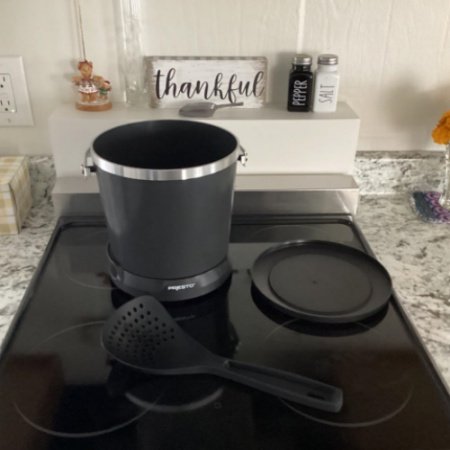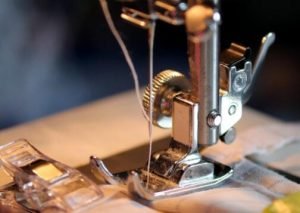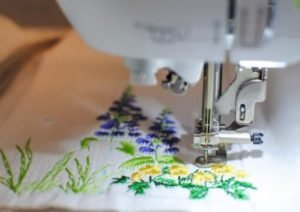
How Easy to Clean FryDaddy’s Ceramic Non-Stick Surface
The “Cleaning Nightmare” of Traditional Deep Fryers
Stubborn burnt stains:
Burnt food residues (such as french fry skins or chicken nugget crumbs) stick firmly to the pot walls, requiring vigorous scrubbing with a steel wool pad. This not only damages the pot but also takes 15-20 minutes each time.
Oil stains hard to remove:
Traditional non-stick coatings (containing PFAS) are easily penetrated by oil. After long-term use, the pot surface becomes “greasy and shiny,” and odors may remain even after cleaning.
Limited dishwasher compatibility:
Some deep fryers are labeled “dishwasher safe,” but in reality, the non-stick coating peels off after washing, accelerating the pot’s aging.

FryDaddy’s “Ceramic Non-Stick Revolution”
Material Analysis: PFAS-Free Ceramic Coating
Cleaning Steps: Incredibly Simple
Comparison with traditional pots:
Extreme Scenario Tests: Cleaning Power Visible
Burnt french fry test:
Deliberately burn french fries (surface blackened), then wipe with a soft cloth after cooling. The black residue falls off instantly, leaving the pot surface as good as new (traditional pots require steel wool + detergent, still leaving traces).
Continuous frying test:
Fry french fries 5 times in a row (10-minute intervals, simulating a party scenario). During cleaning, only a small amount of oil needs to be wiped, with no residual odor (traditional pots accumulate grease due to oil temperature fluctuations, and a “fried smell” remains after cleaning).
Long-term use test:
After 6 months of use, the ceramic surface shows no scratches, and the non-stick performance remains the same as new, with cleaning difficulty identical to a new pot (traditional non-stick pans have peeling coatings after 3 months, making cleaning harder).
Additional Values Brought by Cleaning Advantages
Increased cooking frequency:
Due to easy cleaning, users are more willing to use FryDaddy frequently for fried dishes (e.g., 2-3 times a week, vs. only 1-2 times a month with traditional pots), enriching family recipes.
Extended pot lifespan:
The ceramic coating is wear-resistant and durable (no need for steel wool), with a lifespan of over 5 years (traditional non-stick pots need replacement in 2-3 years), offering higher cost-effectiveness.
Environmental protection and health:
Reduces detergent use (ceramic surface can be cleaned with water or white vinegar), minimizing chemical pollution in the kitchen; PFAS-free, ensuring family health.


 There are several brands of embroidery machines on the market today. Many people make the mistake of buying the machine from the first vendor they come across online. This isn’t the best way to buy an embroidery machine for large designs. It’s essential to check the different brands on the market before opting for the best product. The best machine should have a versatile design that lets you
There are several brands of embroidery machines on the market today. Many people make the mistake of buying the machine from the first vendor they come across online. This isn’t the best way to buy an embroidery machine for large designs. It’s essential to check the different brands on the market before opting for the best product. The best machine should have a versatile design that lets you 


 The cost of a ceiling fan can vary greatly based on the product that you choose. That’s why it’s a good idea to decide what you’re comfortable spending ahead of time. If you know the price range that you’re working with, you’ll be able to find excellent fans that aren’t too expensive for you.
The cost of a ceiling fan can vary greatly based on the product that you choose. That’s why it’s a good idea to decide what you’re comfortable spending ahead of time. If you know the price range that you’re working with, you’ll be able to find excellent fans that aren’t too expensive for you.






